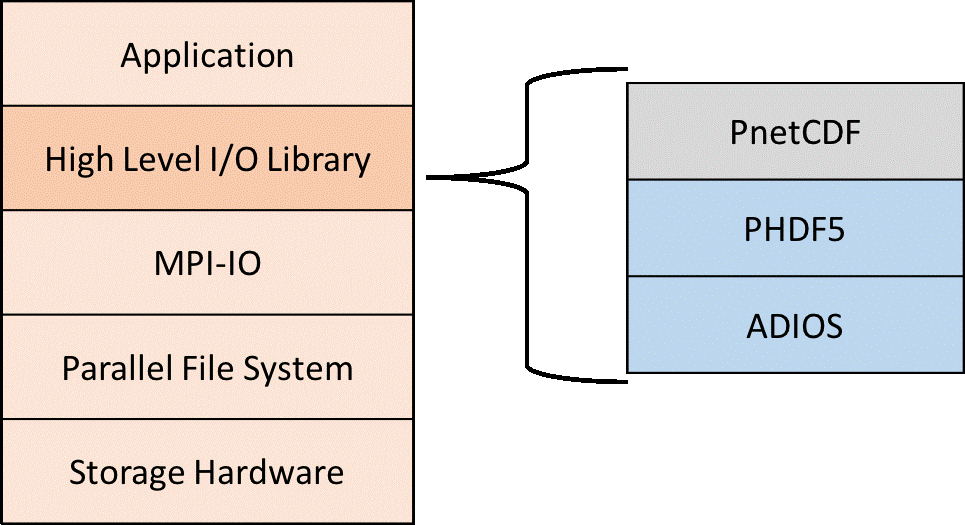Parallel I/O Stack
The following figure shows the typical I/O software stack that is needed to make optimum use of the storage hardware in an HPC system. The role of the High Level I/O Library is often crucial. First, it conveniently maps application abstractions to a structured, portable file format. Second, when the library is a parallel I/O library, it can achieve superior I/O rates by going through the MPI-IO interface to access an underlying parallel file system like Lustre, as described in the Parallel I/O roadmap.

The present roadmap includes topics about two major high-level libraries: PnetCDF, a parallel implementation of the netCDF API and the related file format; and PHDF5, a parallel library for working with HDF5 formatted files. ADIOS is also touched upon briefly.
CVW material development is supported by NSF OAC awards 1854828, 2321040, 2323116 (UT Austin) and 2005506 (Indiana University)